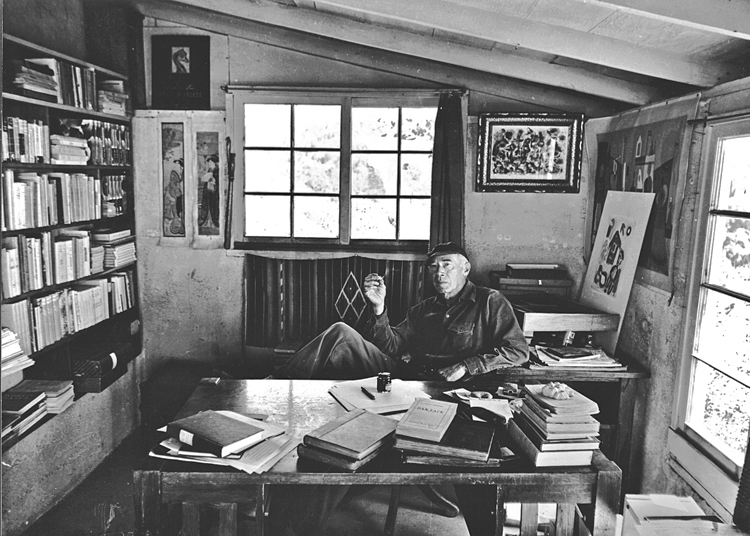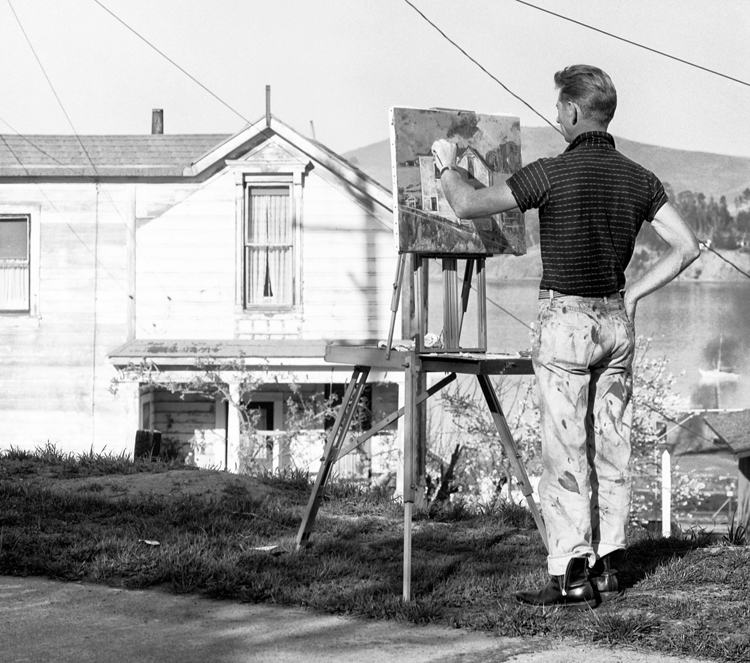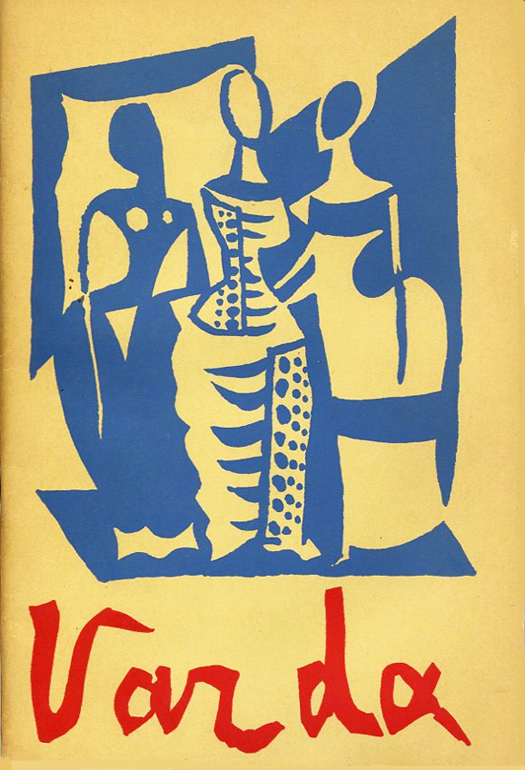Road to Bohemia - Page 2
 |
|
|
 |
|
|
 |
|
|
 |
|
|
 |
|
|
|
|
|
|
It was indebted, sometimes consciously, to the Russian Hill, Berkeley, and Carmel artist-writer scenes of decades earlier, but it was different, as art and literature had become different.
Bohemians, artists who cut themselves off from standard society, in some way—psychically, physically, through dress or attitude or mode of speech—"have existed in all climes and ages," according to Henry Murger, who popularized the term in France in the 1850s with his book Scènes de la Vie de Bohème.
The scene that developed in post-World War II Northern California, diverse as it was, with many different groupings, nonetheless shared some characteristics, as one of its leaders, poet Kenneth Rexroth, wrote in 1957.
Artists were horrified by the war, both those who served in the military and those who avoided it. They were angry at America's materialist society—a materialism many were too broke to enjoy. They enjoyed the optimism of the postwar world, to a degree, but many fought against what they saw as society's complacency, stupidity, close-mindedness.
Many artists and writers were philosophical anarchists. Many were homosexual or, in Broughton's case, androgynous.
Shockingly, for those at the time trying to find a cheap pad in San Francisco or thereabouts, Rexroth wrote, "Life is far less competitive [in San Francisco] than in other American cities. It is very easy to get by."
Artists and poets could easily find work as "forest watchers, clam diggers, fruit pickers, fishermen for the summer," he wrote, and observed that most of them were working-class people, not academics.
He did credit one aspect of Bay Area society that remains today, its "consistently permissive social atmosphere."
There was a utopian impulse about many of these mid-century bohemians.
"Nobody cares if you visit a brothel, and nobody cares if you write free verse," he observed.
One of the strong appeals of the bohemian life is this divorce from the mundane world of punching the clock and paying bills.
At parties, bohemians don't brag that their kids are doing great at school or complain about high property taxes.
They talk about art, society, spirit; they live a life that makes a difference in the world, a life that is filled with lust, drama. They live in beautiful and remote places—bluffs, along the sea, on houseboats. Anything can happen any day, and everyone is special.
Consider poet Bob Kaufman, who either invented the term 'beatnik' or inspired San Francisco Chronicle columnist Herb Caen to invent it.
One of North Beach's legendary figures, a black man who attracted particular scorn—and worse—from the police, Kaufman was all about heightened experiences.
"He would jump up and scream, take charge of a room," his friend Lynn Wildey recalled. "If people were getting square, he'd jump up and swirl around. When he would walk into a room, people would stop saying mundane things and be unusual…they would say things they would never say...They'd bring you to the peak experiences of their lives."
Gatherings, as this tale suggests, had another value other than allowing people to pool enough money to buy wine. They encouraged spontaneous creation. Broughton wrote, in his memoir, about the poet Rexroth: "I regret that he seldom allowed into his writing the spontaneous nuttiness of his impromptu talk."




